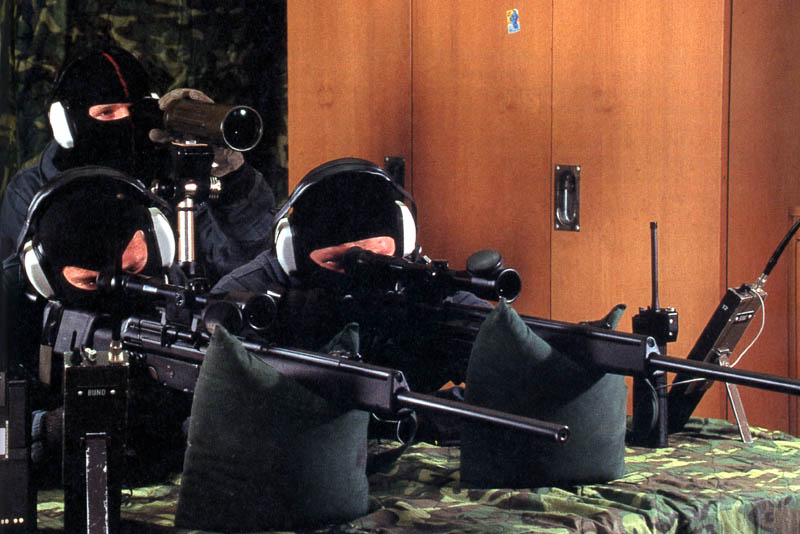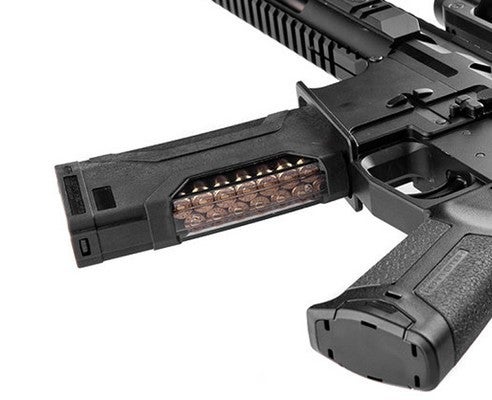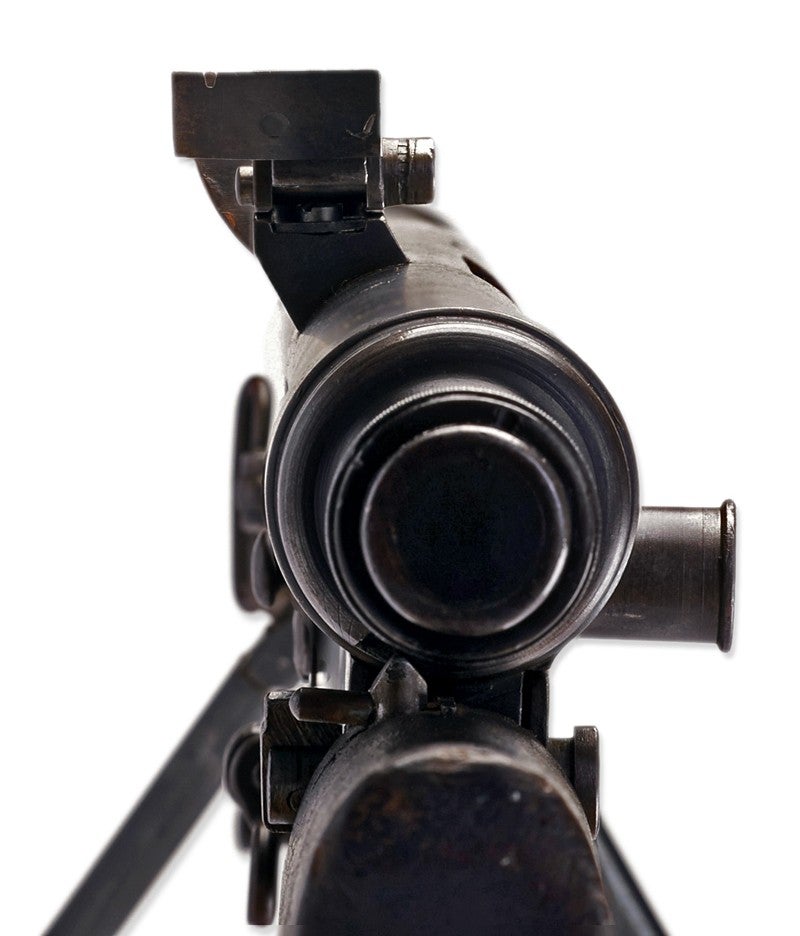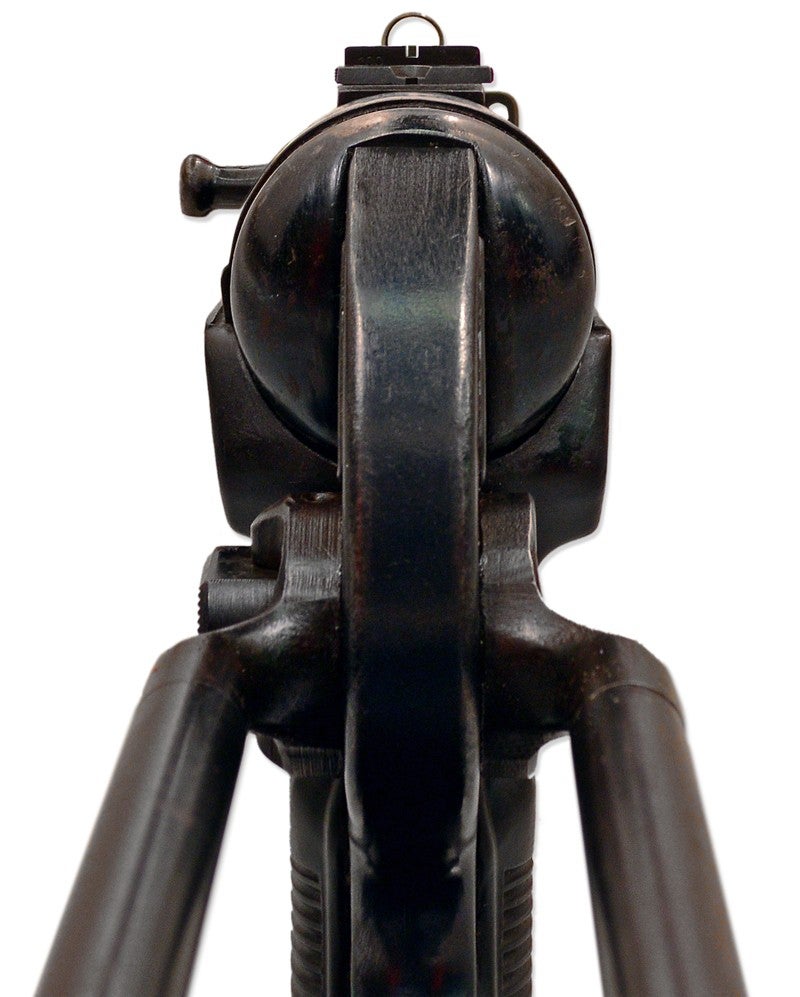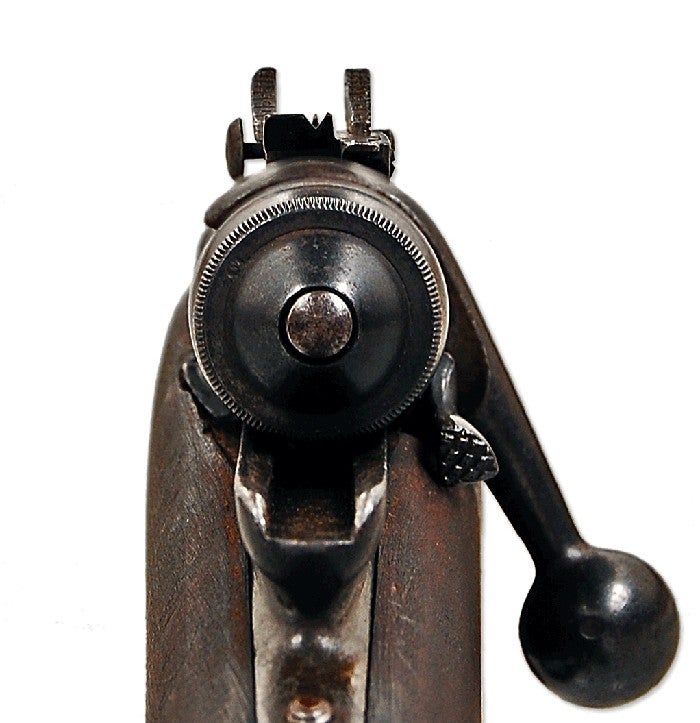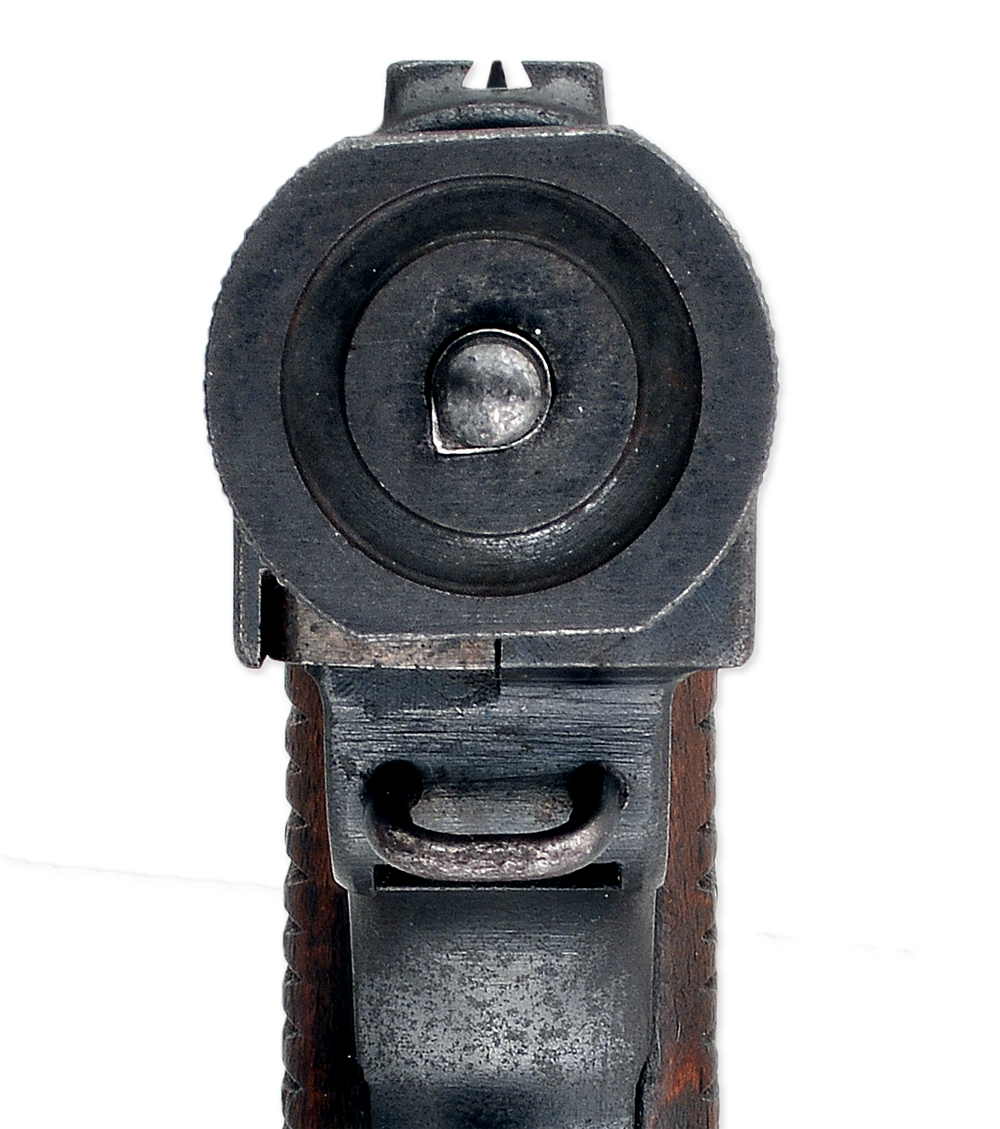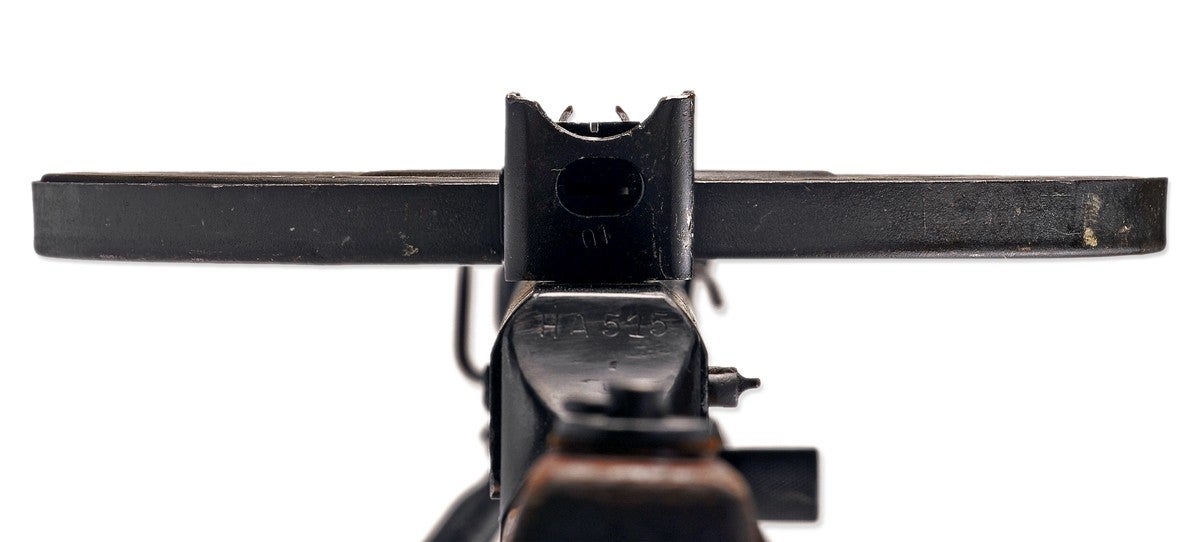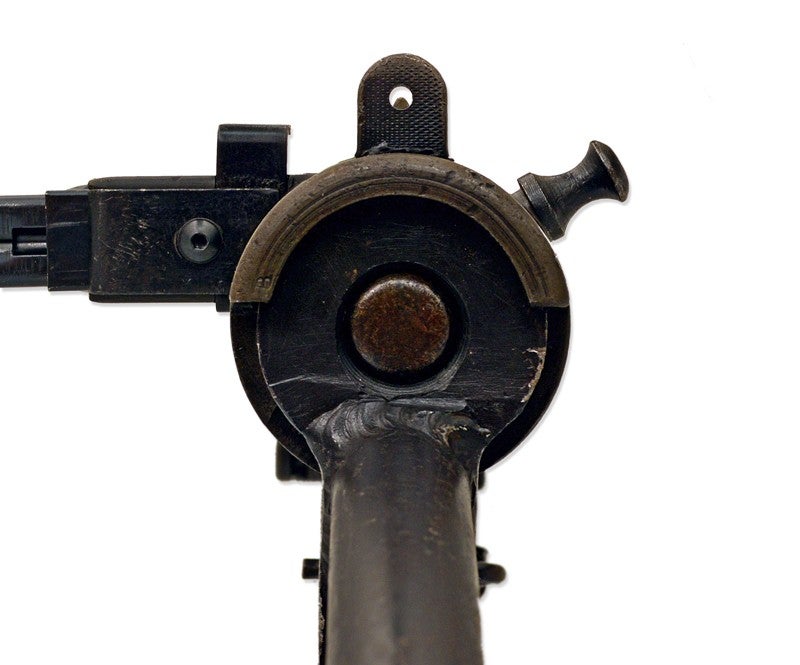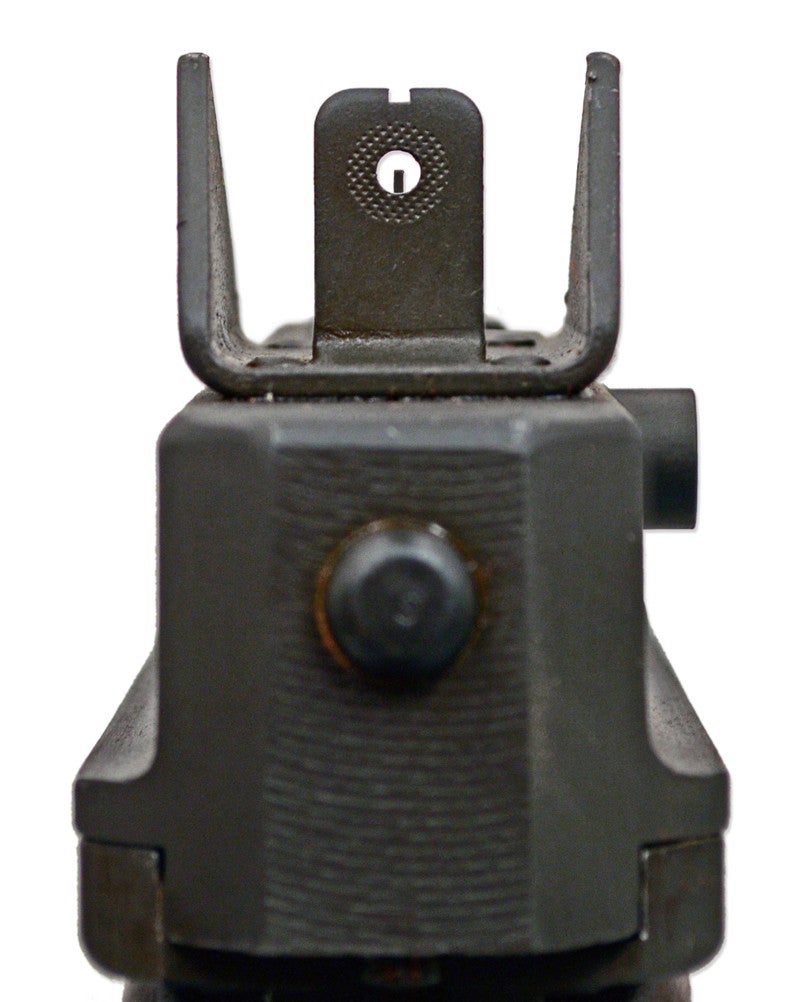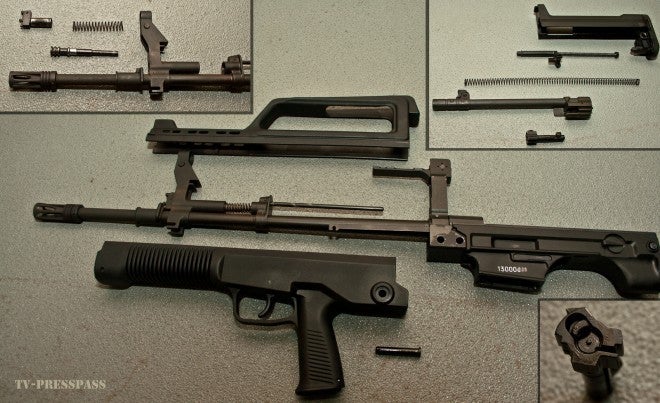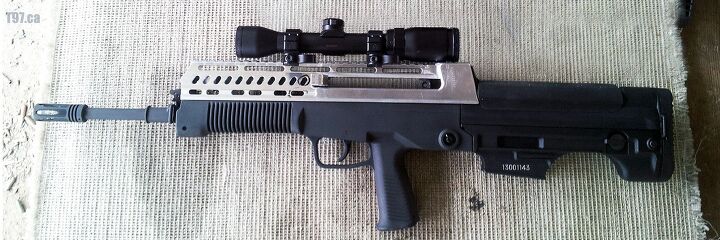![Taurus CT9, with mud]()
Taurus has released a new 9mm carbine onto the US market, which prompts the question: why do people buy 9mm carbines?
![Taurus CT9 Carbine]()
As I see it, the interest in this type of gun comes from two main groups: folks with tactical reasoning in mind, and purely recreational shooters. For the former, 9mm carbines offer magazine compatibility with a service pistol, and allow greater range and accuracy than that pistol while still being within the confines of a small cartridge. For the latter group, pistol-caliber carbines are simply great fun at the range, being lighter than full size rifles, cheaper to shoot, and with negligible recoil. I understand both motivations, and so I’ll be looking at the CT9 with both groups of potential buyers in mind.
First, let’s address the elephant in the room with the CT9: its magazines. Clearly, Taurus does not understand its target market, because the CT9 uses a proprietary magazine design, and only makes them with a 10 round capacity. They could have designed the carbine to use one of their existing pistol magazine designs (like the Beretta CX4 does), or to use an existing and readily available design (like Uzi mags, which the CT-9 mags are fairly similar to), or simply bowed to market reality and made them for one or more dominant pistol mag designs like Glock mags (as the KelTec Sub-200 did). Instead, Taurus picked the worst possible choice, and leaves us with nothing but expensive single-source 10-rounders (I called up Taurus to ask them why they did this, but have not yet heard back). This isn’t such a big deal for the recreational shooter, but it will drive most of the tactical market away. I suspect sure some executive thought it would be smart to just make everything California-compliant, but they are wrong. Sorry, Taurus.
Setting aside the magazine issue, let’s take a look at the other features of the CT9…
Construction
The CT9 is a basic blowback design, which is pretty much standard for pistol-caliber carbines dating back to WWI. It uses an extruded aluminum upper (bonus points for good use of manufacturing tech – the FN SCAR does this too) and a polymer lower and furniture. The lower has a couple thin steel plates on the outside to make it feel like it’s all metal, but they are just aesthetic. Basically, a steel bolt, trunnion, and barrel in a polymer and aluminum shell. Not bad; that helps minimize overall weight.
Sights
The aluminum upper assembly includes a full-length Picatinny rail, so it is simple to attach any sort of iron or optical sight system you prefer. Stock, it comes with a pair of plastic “iron” sights. I’m not particularly happy with them, though. The front sight is a big square post inside a circular protective hood, but it’s not centered in the hood – it’s lower than the center. The rear sight has two setting to flip between, an aperture and a square notch. The aperture would be the better choice in most cases, except for that issue of the front post not being centered. You can’t line up the round aperture with the round front sight hood, because the front post isn’t centered in it. Instead, you have to focus on getting the front post centered in the rear aperture, ignoring the front hood, which your brain really wants to line up with the aperture.
![Taurus CT9 front sight]()
I found it more effective to slide the rear sight about 8 inches forward on the gun and use the square notch option. This provides a sight configuration like a pistol. It was easier to use that way, but not as precise as a proper aperture sight setup would have been. Why didn’t Taurus center the front post in its hood? I don’t know.
![Taurus CT9 rear sight]()
Controls
Some thought definitely did go into making the CT9 a very lefty-friendly design. The charging handle is mounted forward on the upper assembly, but with the right size hex key it can be swapped to either the right or left side. The bolt holdopen and release is copied from the AR (point for tactical shooters) and is mounted on both the right and left sides of the gun for ambidextrous use (extra bonus point). The safety is also ambidextrous, operates the correct way (flip down to fire), and is reachable (barely, but it is) from a firing grip for me (more points!).
![Straight off an AR - hold the bottom to lock open; smack the top to drop the bolt]()
Straight off an AR – hold the bottom to lock open; smack the top to drop the bolt
The CT9 does lock open on an empty magazine, and its magazine release is a paddle type located behind the mag. Magazines do drop free as long as you hold the paddle all the way in.
The trigger is “meh”. It’s a long single-stage design with a reasonably light letoff. I would rather have either minimal initial takeup (the distance you pull before reaching the point where it fires) or a proper two-stage setup (where the initial takeup is light and then the pull becomes heavier before firing). Given that this is not going to be on the line at Camp Perry, the trigger isn’t really an issue, but it would have been nice to see more effort go into it, given the MSRP for the CT9.
Furniture
As I mentioned above, the furniture on the CT9 is all polymer. The front end is good, with coarse ribs for a good grip, and texturing on the front of the magazine well for folks who prefer to hold it there. A polymer rail is molded into the bottom for mounting a light, and threaded holes are included for adding more rail sections to the sides if you want them. A sling mounting point is located below the front sight, and is reversible if you want it on the left side instead.
The pistol grip is copied from the AR, and is fine. The stock, sadly, is clearly a California-inspired thumbhole kludge. The operating parts of the gun are all contained in the upper assembly, so there is no mechanical reason why a good folding or collapsing stock couldn’t be mounted, except that Taurus doesn’t want to do the extra work of manufacturing folding stocks in the US (import laws prevent them from being made in Brazil this way).
Handling
There are two basic ways to lay out a pistol-caliber carbine: with the magazine in the pistol grip (Beretta CX4, KelTec Sub-2000) or ahead of it (Thompson, HK USC). Taurus chose to put the CT9 magazine well ahead of the grip and trigger. This moves all of the operating parts several inches forward, which has some good and some bad consequences. The good is that it generally allows the use of a folding stock – which Taurus decided not to use. The bad is that is moves the balance point of the gun forward and increases the overall length. Thanks to the minimal weight of the CT9 stock, it balances too far forward, and feels heavier than it really is (which, at 7.4 pounds, is still heavier than most other 9mm carbines). The length of pull on the stock is also rather long, and leaves the gun feeling uncomfortable for smaller statured people. Of course, I’ve heard from taller people complaining about fit on other 9mm carbines, so this may be ones of those cases where you can’t please everyone (unless you have a multi-position collapsing stock…which Taurus decided not to use).
Accuracy
I didn’t shoot the CT9 for groups on paper, as that’s not really what it’s made for. Instead I took it out plinking at rocks on a makeshift range, and it was perfectly acceptable, hitting everything I took aim at. The adjustments to windage and elevation on the stock rear sight are pretty rudimentary, requiring an allen key to use, but they work. Most buyers will probably mount red dot optics on a gun like the CT9 – the gun is really begging for it.
Reliability
All of my testing was done with generic factory reloaded 9mm, and I had no functioning problems of any kind, I’m happy to report. With all the ambivalency I was finding with the CT9, I was hoping for something I could point out as being very good. So, I asked them if I could try running it through a mud test (the area where I shoot has a mix of clay and volcanic ash that makes a really disgusting gloopy mud when wet). Well…they took a long time to respond to me, and I got impatient and did it anyway, figuring that it was unlikely to actually damage the gun. I got a response the very next morning, saying that they did not want me to do it. Um…whoops. Guess they should have been more prompt. Anyway, I have video of the mud test I did for you to see:
I’m happy to say that it passed just fine! So there is something the Taurus is pretty good at. I know people will say I should have tried it again with the bolt open, but no gun would have passed that – and you shouldn’t be walking around with the bolt open anyway is falling into mud is a possibility. Keep it closed on an empty chamber.
Conclusions
Unfortunately, the CT9 is a gun that missed several opportunities to really shine. The limited magazines and thumbhole stock will really limit its interest to the tactical shooting community, despite the work Taurus put into the control to make it appealing to that group. For the recreational shooter it looks better (especially taller folks), but the MSRP of $900 will be a daunting obstacle to many sales. As of this writing, they are selling on auction sites for more like $650, which is more reasonable but still more expensive than some of the competing products from other companies.
If you are in the market for a 9mm carbine, you should definitely give the Taurus consideration. While it may not fulfill all of its potential, there is nothing actually bad about it. All my complaints are along the lines of “this works fine but I wish it also (blank)”. That doesn’t make for a rave review, but it does make for a dependable working firearm. In today’s world of overhyped marketing and spotty QC, the Taurus CT9 was a refreshingly honest piece of machinery. It does what it says, and doesn’t try to go overboard. The question for the buyer is, does it do what you want a carbine to do for a price tag you’re willing to pay?
Stag Arms has partnered with TFB to give you the opportunity to win a Model 1 rifle! Enter here.




